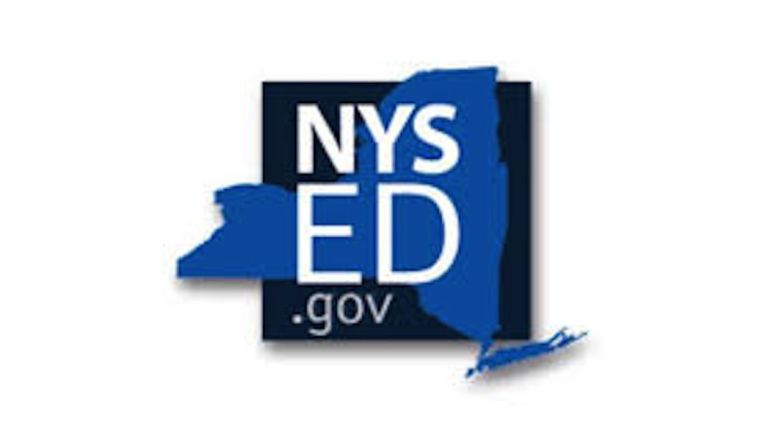
Though the state Education Department rated every North Shore educator as either “effective” or “highly effective,” area school superintendents have panned the state’s evaluation system, saying their methods for determining teacher performance do not match those coming out of Albany.
“We don’t place a lot of value in the numbers because there’s still a lot of mystery as to what exactly they mean,” said Roslyn Superintendent of Schools Dan Brenner.
“The most important component to evaluate is classroom observation and evaluations that a teacher’s direct supervisor is doing,” Brenner said. “When we get good, comprehensive data from the state, we certainly incorporate that in a meaningful way to base a teacher’s strengths and weaknesses, but in its current construct it’s very hard to utilize that.”
The state Education Department on Thursday released its first complete Annual Professional Performance Review results based on evaluations from the 2012-13 school year. Teachers were rated on based on a 0-100 score that measured student performance on state exams and in reaching state learning benchmarks, other locally-selected learning measures, classroom observations and parent testimonials. Individual teacher data was not released, per state law protecting individual privacy.
Manhasset Superintendent of Schools Charles Cardillo echoed Brenner’s sentiments, saying “our focal point is on improving instruction and the model we’ve adopted, of frequent unannounced teacher observations, is most significant to us. What takes place at the building level between the principals, teachers, coordinators is the best indicator,” and adding the state’s evaluation system is “ill-conceived.”
The state rated 79 percent of Roslyn’s 287 educators as “effective,” while 74 percent of Manhasset’s teachers were also considered “effective.”
Ninety-eight percent of Great Neck and Herricks teachers received “highly effective” ratings, while 83 percent of Sewanhaka’s 590 educators were also deemed “highly effective.”
Despite his district’s ratings, Great Neck Superintendent of Schools Tom Dolan said, “This is a system that has been imposed on us so the state has numbers. We have always evaluated teachers and we will continue to do so. We have done a fine job without the state.”
The state found 68 percent of Mineola’s 234 teachers to be “highly effective,” with 69 receiving “effective” ratings.
North Shore scores were well above the statewide 51 percent “highly effective” rating and 44 percent “effective” rating. One percent of teachers throughout New York were considered “ineffective,” the lowest ranking.
“The purpose of the evaluation system is not to create a ‘gotcha’ environment,” Board of Regents Chancellor Merryl H. Tisch said in October 2013, when preliminary numbers were first released. “The goal is to improve teaching and learning by targeting professional development to make sure every student receives quality instruction. We want to highlight and reward excellence, ensure those who are struggling receive the support they need, and provide continuous feedback to all educators.”
Herricks Superintendent of Schools John Bierwirth said he has been critical of the state’s evaluation system since its inception in 2010. He has said Herricks already had its own teacher evaluation system and didn’t need another one imposed on the district.
“I don’t think very much of their system,” Bierwirth said. “Good school systems have historically let people who were not up to their standards go usually well before they came up for tenure.”
Bierwirth said the evaluation system hasn’t worked the way it was intended by the state Department of Education anyway.
“One of the purposes of the system was to let more ineffective teachers around the state go. And I see little or no evidence of that being the case statewide,” Bierwirth said. “The new system has in fact made it more difficult to let probationary teachers go than before APPR was passed.”
But Sewanhaka Central High School District Superintendent of Schools Ralph Ferrie said he expected the ratings would produce positive results.
“We do have outstanding teachers in the Sewanhaka High School District. We’re pleased to see the rating as they came out last year,” Ferrie said.
He expressed concern that part of the teachers’ evaluations are based on student test scores, but said he was satisfied with the balance that exists in the system permitting local school districts to define evaluation standards.
“I think the district on the whole is doing a good job on how we are evaluating our teachers,” Ferrie said.
East Williston Superintendent of Schools Elaine Kanas said she and a committee of teacher representatives and administrative representatives, created standards for 80 percent of the teacher evaluation scores in their district, with the standards ultimately approved by the district board of education. She said 20 percent of teachers’ evaluations statewide are based on students state test results.
“We set a very high bar. We made a decision in our district to make our evaluation plan a very rigorous plan,” Kanas said, adding that she is satisfied with the result.
“We’re pleased that all of our teachers were effective or highly effective and none were developing or ineffective,” she said.
Great Neck’s Elizabeth Mellick Baker Elementary School, East Williston’s North Side School and Roslyn’s Harbor Hill Elementary School were included on a state watch list of released last weekend of 318 schools throughout New York – 49 from Nassau and Suffolk counties – that need to improve test scores or improve the quality of education for developing English speakers or students with disabilities.
Dolan called the state watchlist “another useless statistic,” noting Baker students outscored other elementary school students in the state by 53 points on state English exams and special education students outperformed their peers on state tests.
“[Baker] does not appear to be a school in need of assistance,” Dolan said. “But because our general education kids did so well, the state wants us to work on pulling up our special education students.”
Anthony O’Reilly and Richard Tedesco contributed to this story.






